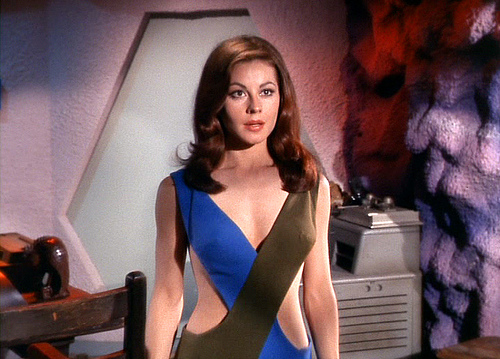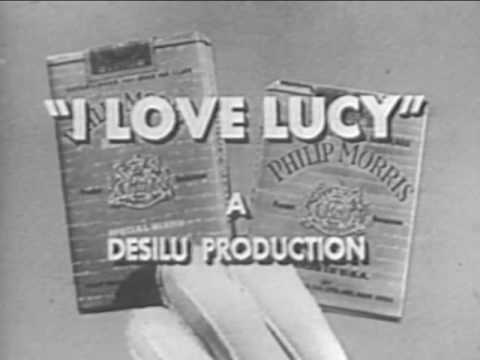NETWORK: CBS
The fourth season saw The Dick Van Dyke Show continue at the height of its popularity to find new ways to tell stories, introduce more backstory for Rob and Laura, and continue to provide serious public service commentary packed into a hilarious comedy shell. The season opens with a classic sitcom questioning of gender norms. Laura beats up a guy for Rob, and this causes him to question his masculinity and wrestle with how he feels about how "feminine" is wife is or isn't. You've probably seen similar episodes on other shows since then, but what's interesting about this one is that it calls out a real-life behind-the-scenes issue. It was very unusual to see women in slacks on television back in the mid-1960s. Famously, Gene Roddenberry put his female officers in pants in his original Star Trek pilot, and one of the network's notes was insistence they wear skirts. (Just as a side note, it wasn't misogyny to blame for how short they were, though costumer Bill Theiss did like to play with as little fabric as possible. The miniskirts were a request from actress Grace Lee Whitney who wanted to show off her legs. ...Of course, on some other cast members they end up so short as to barely be a skirt -- there's a matching uniform panty under it which is prominently displayed on a few crewwomen! But I digress.) Mary Tyler Moore told the network that she wanted to wear slacks around the house on the show because she was a housewife and that's what she would wear. There's a moment in this episode where Rob comes in and complains that his wife is always in slacks and why can't she be more feminine. Laura retorts, "I thought you liked me in slacks!" And the episode eventually ends with Rob realizing he was talking nonsense, borne out of insecurity. The rest of the episode is a hoot too, as Rob privately engages a judo tutor (why was judo such a thing in the '60s?), culminating in his desire to fight his wife to prove he can beat her.
In a similar story about gender issues, Ritchie begins coming home from school with black eyes given to him by a female bully. The show dances around the question of whether it's ever okay to hit a girl. I like that it came down to, against their better judgment and with much equivocating, Rob and Laura instructing Ritchie that if she attacks him again he can defend himself. We also get a brief couple looks at the girl's parents, and from what we see of their marriage it seems the child is just mirroring what she sees at home. The final solution to the episode is that Ritchie does avoid hitting the girl, but gets her to leave him alone - by kissing her. While I really dislike the trope that children are violent because they have crushes, it's hilarious that the girl wanted him to kiss her only to drop him once she decided he was a bad kisser!
One criticism that I do have for the series, however, is that
sometimes for the sake of story it seems to forget that Rob and Laura
have a son. Every now and then the Petries will run off and do something
with their friends and I just wonder, "Who's watching Ritchie?" Or
they'll be home and he's nowhere to be seen. Granted, they do hire a
babysitter in one episode, but sometimes it seems like there's no time
to even line one up. It's not a big deal, but it's something that would
become much more of an issue in the future for a series like Everybody
Loves Raymond. Thankfully, young Larry Matthews gets a few episode too
and another standout this season is "Boy#1, Boy #2" in which Rob is tasked
with writing a commercial for two kids, and ends up casting his son and
the neighbor boy. Laura and Millie's inner stage moms come out and get
competitive and the whole exercise proves the old W.C. Fields advice to
never work with children. Kudos to the writers, actors, and directors
for making good kid actors look like bad kid actors.
We get more celebrity guest stars this season as well. The first is comedian Don Rickles who appears in a two-part episode. First, he is introduced in a flashback episode revolving around the old "pregnant woman stuck in an elevator" cliche. But the clever bit here is that he's attempting to rob the Petries when the elevator is stopped. Part two has him in jail as a convict, and he's invited the Alan Brady Show to come perform a special show for the boys in the clink, which he emcees.
Season four finally breaks with tradition and Alan Brady, as portrayed by Carl Reiner, is finally shown onscreen no longer obscuring his face. It's good, but I do sort of miss the old mystery gag. Still, the episode really wouldn't have worked that way. There's a great story where he's cast in a Tennessee Williams-type play and can't help from secretly hiring Rob to punch it up to be more his brand of humor.
Another great message episode is a hilarious story about an intoxicated Laura trying to entertain her in-laws for the first time. Moore is phenomenal in this episode. We watched it as a family over Thanksgiving, and the humor still plays just as well today. The smart thing though is, while we are laughing at the situation, the episode had an important message: never take another person's prescription medication. This is not a subject that gets a lot of television attention even these days (there were a few shows that did stories about Ritalin a decade ago), but it's just as important an issue today. With the present opioid epidemic, it's fascinating to see a message like this on network television in 1964.
As in previous seasons, the series loves to play with structure. Not only do we have the usual flashback episodes, but we have one this season which is framed as a court case. It's a very fun story revolving around faulty pillows, with an unexpected culmination. Ed Begley guest starts as the judge.
The changing music scene also gets lampooned in this season. There's a take on the contemporary Beatlemania, when a hugely popular British invasion musical duo are guests on The Alan Brady Show and Rob is forced to hide them out at his house and try to keep it a secret. In another episode, Rob learns that a terrible song he wrote in the army is now a hit pop record. It's a good episode about the importance of making good deals regarding music publishing rights. As usual, the show has writer's perspective on show business and how it can rook good people out of their due.
In another sign of the times, an old friend of Rob's has become something of a Hugh Hefner type and offers Rob a job at his "gentleman's magazine." While tamer than Playboy, it's amazing how much this episode was able to get away with given censorship of the time. It helps that so much is implied rather than outright stated, but it's still very clear there's something salacious going on.
There's a hilarious episode with a great message called "Show of Hands," in which Rob accidentally stains his hands black on the same night he's supposed to accept an award for the show. This might not be too big a deal were it not an award from the Committee for Interracial Integration. With good humor, the series makes a wonderful statement about race relations that sadly remains as important and relevant as ever.
Finally, I want to mention another two-part episode with an important guest star. In "Stacey Petrie," Rob's brother Stacey comes to town, played by Dick Van Dyke's real brother, Jerry Van Dyke. It gives Jerry a good character to play, though I'm not sure I was ever as engaged in the story as I perhaps should have been.
The 1965 Emmy Award ceremony was the most bizarre one arguably in the entire history of the Awards. They drastically changed the way the awards were done, eliminating most categories and throwing everything into four broad categories: directing, writing, acting, and overall program. In each category, several awards were given. So, comedies were competing along with dramas and variety shows. It's a bizarre footnote in history. While in earlier years there were sometimes too many categories (dramas were sometimes split into as many as three categories), this seemed a bizarre over-correction. Dick Van Dyke won in the "Actors and Performers" category alongside such various personalities as Barbra Streisand and Leonard Bernstein. Rather than clear genre categories, The Dick Van Dyke Show was one of four programs awarded "Outstanding Program Achievement" and the only comedy to win (two other winners were variety programs or specials).
Also due to the strangeness of that year's categories, the award for writing went to the drama series The Defenders, and The Dick Van Dyke Show lost in that category for the only time in its run. I believe that had it been in a designated comedy writing category, Carl Reiner's nominated episode, "Never Bathe on Sunday" would have won him another Emmy. It's a classic episode in which Rob and Laura go away on a second honeymoon only for Laura to get her toe caught in the faucet will taking a bath. For most of the show, Laura is an offstage voice in the bathroom (since she's naked in the tub) and the situation is really smart and funny. Mary Tyler Moore is great in it, though at the time of filming she was annoyed at being off camera for nearly the whole show and she flipped out at Reiner over it (she was on edge, as she was quitting smoking at the time). Despite the backstage drama, what resulted was a standout half-hour of television.
FAVORITE EPISODES: My Mother Can Beat Up My Father, The Lady and the Baby Sitter, 4 1/2, Pink Pills and Purple Parents, It Wouldn't Hurt to give Us a Raise, The Death of the Party, The Case of the Pillow, Girls Will Be Boys, Your Home Sweet Home is My Home, Never Bathe on Sunday, Show of Hands
UP NEXT: The Dick Van Dyke Show (for the last time!)
Blood and Chrome
11 years ago






